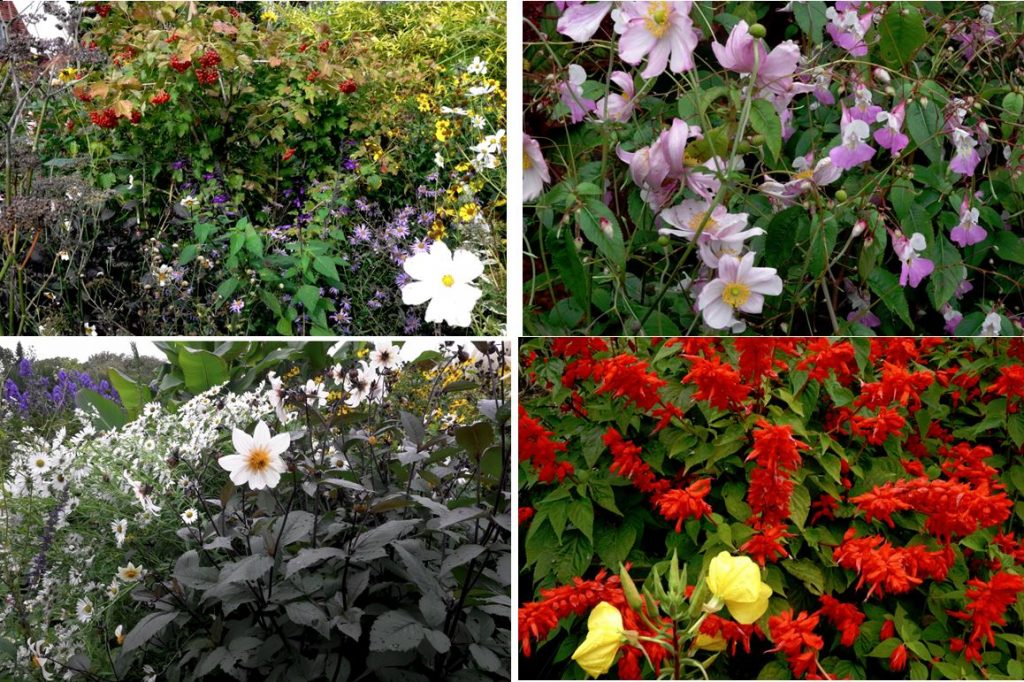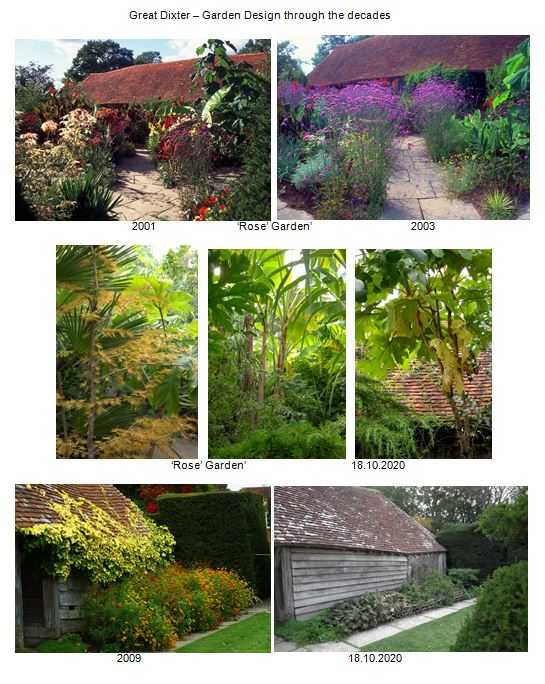Great Dixter, East Sussex The wild nature embedded in Great Dixter never fails to impress. In mid-October 2020 the rain-soaked bunches of rose-tinted fruits of the native Guelder rose (Viburnum opulus) hang over the deep blue salvias (Salvia ‘Indigo Spires’), the sky blue Michaelmas daisies, white cosmos and the yellow Helenium ‘Riverton Beauty’. In its native home on the chalky downs Guelder rose is a welcome native shrub. Other native trees and shrubs, usually at the back of the Dixter borders are hazel (Corylus avellana) and elder (Sambucus sp.), especially the dark leaved varieties. However, the most used wildflower in the garden is the Policeman’s Helmets (Impatiens glandulifera) albeit an invasive species from the Himalayas which is prevalent along streams and rivers, but it is an attractive and a worthy member of herbaceous borders since it adds splashes of pinks and whites where you least expect it. It works like a climber in the borders as there is so much going on, but in the wild it holds its own as an upright plant with a long season of flowering. Its soft colours are a natural accompliment to the tall Anemone japonica and colour-co-ordinated with the old mottled heads of Hydrangea. Another invasive species, much used at Great Dixter is Cotoneaster horizontalis which adds structure and colour and is a vital nectar source for honeybees in the spring, and red fruits for birds in the autumn. Colour blocking is a thing at Dixter, a defiant statement to the niceties of conventional borders, especially with its semi-tropical plants, callas, musas and tetrapanaxes. Colour combinations are sometimes startling, for instance the intense red of Salvia splendens paired naturally with the yellow flowers of introduced wildflower Evening Primrose (Oenothera sp.), for where seedlings arise is often where they will be next year. Another key feature of Great Dixter is the use of grasses which have always been used with flair and panache, often in groups, in drifts of similar colour, or set off against dark foliage – as well as the species-rich wildflower meadows and wild ‘lawns’. In remembering Christopher Lloyd’s contribution to this superb wild garden it is good to see the tall yellow spikes of Verbascum ‘Christo’s Yellow Lightning’ AGM still hanging on in autumn. There is so much going on at Dixter that these bright combinations are just a small part of the overall garden which is a presentation of sublime and subtle colour associations that mimic the natural world.


